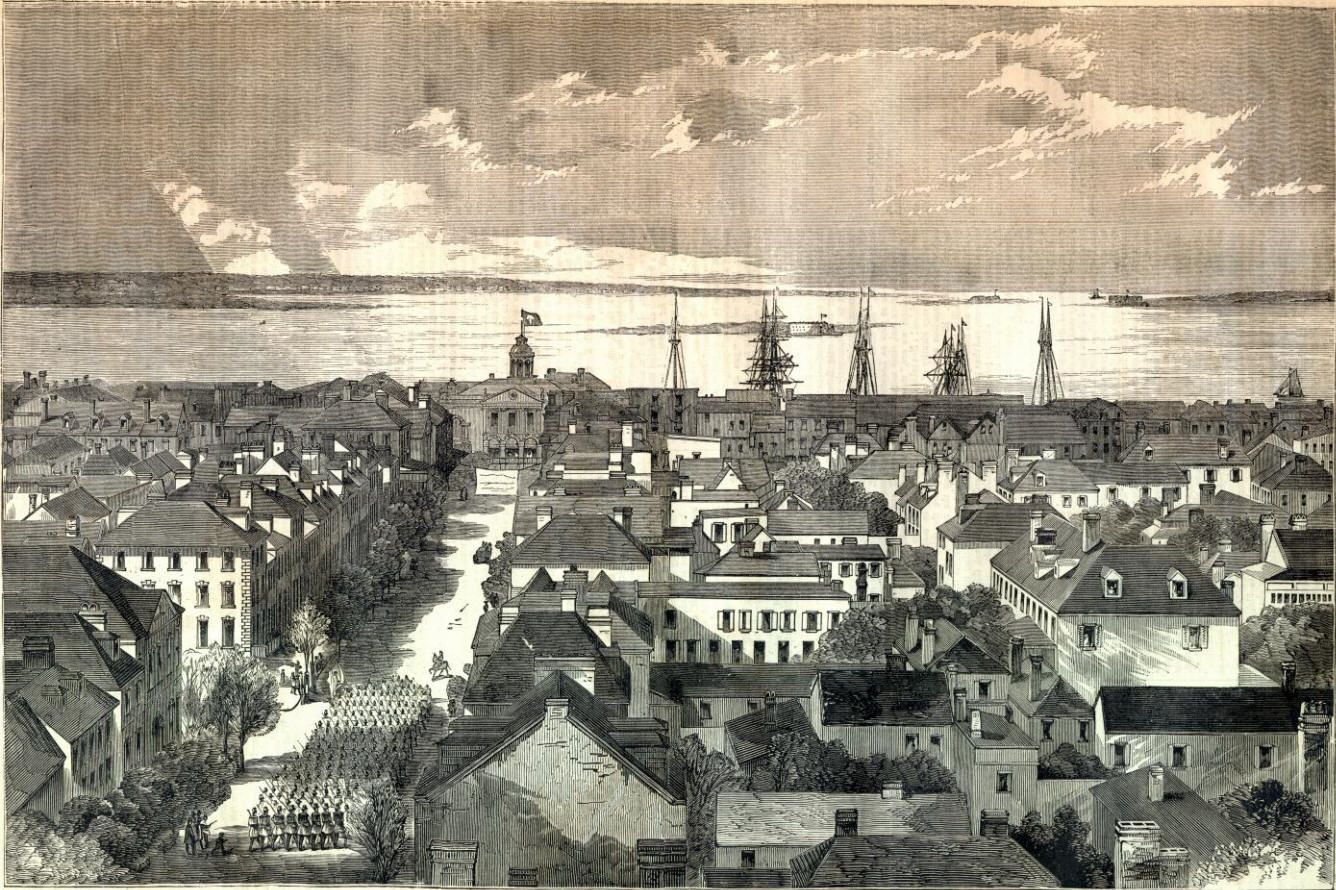From South Carolina’s Columbia Guardian:
We learn from a private source that on Friday eleven guns and gun-carriages were sent down to Morris’ Island, and four placed in the battery at the lower part of the island. The Washington Light Infantry and another company have been sent to Bird’s Key, which commands the point between Morris’ Island and Edison river, for the purpose of preventing the landing of hostile troops.”
Southern politicians anticipate federal military action in response to secession. Particularly vulnerable are coastal areas, and the Confederacy struggles throughout the Civil War to prevent Union coastal operations in southern waters.
The Washington Light Infantry of the 25th South Carolina Infantry Regiment was named after George Washington. Comprised of Baptists, Episcopalians, Lutherans, Presbyterians, Roman Catholics and Unitarians, the unit represents a cross-section of southern religious life. Among soldiers of Washington’s Light Infantry buried in Charleston’s cemeteries, Presbyterians are most common, reflective of the long-standing popularity of the Reformed faith in the city.
Private Samuel Saltus of First Baptist Charleston is among the Baptist members of Washington’s Light Infantry. Several generations of prominent Saltus’ resided in Charleston prior to Samuel. Captain Francis W. Saltus, Sr., had been a Charleston ship owner and cotton financier around the turn of the nineteenth century, and the Saltus family also rose to political prominence in Texas.
Throughout the war, Baptist soldiers South and North will fight shoulder-to-shoulder with many men of other Christian denominations, as well as a sprinkling of Catholics, Jews and Mormons, and many who profess no religious faith whatsoever. For many, the result will be exposure, as never before, to diverse theological viewpoints against the backdrop of the terrors of bloody battles, crippling injuries and sickness, and ever-lurking death.
Many soldiers who survive the Civil War will return home with a more nuanced understanding of faith than that which they carried with them into the war.
Sources: Columbia Guardian story as quoted in Richmond Times Dispatch, January 17, 1861 (link), Charleston’s Burial Grounds (link), Francis W. Saltus information (link and link); Francis R. Lubbock, ninth governor of Texas (link); also see Walter Edgar, South Carolina: A History (University of South Carolina, 1998); illustration of Charleston from Harpers Weekly, January 26, 1861.



